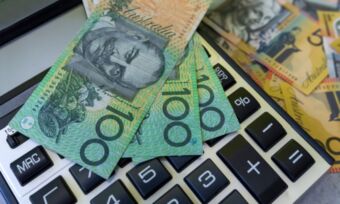Should you reinvest dividends or take them as cash?

Tossing up between reinvesting dividends or taking the cash? We take you through the pros and cons plus take a look at the numbers to show you the potential difference this decision can make to your returns.
One way you can make money through shares or ETFs is through dividends. Dividends are essentially a proportion of the profits paid to shareholders. While not all shares and ETFs pay dividends most of those that do, pay dividends twice a year.
If you have invested in shares or an ETF that pays dividends you generally have two options – you can have the dividends paid into an account as cash or you can reinvest them to buy additional shares in the company or units of the ETF. If a company or ETF offers a dividend reinvestment plan, you’ll be generally given the option to opt in when you make your first investment into the shares or ETF.
So, which option is right for you? Let’s start by looking at the numbers to see the potential difference the decision can have on your returns. Then we will explore the pros and cons of reinvesting dividends plus the tax considerations.
The difference reinvesting dividends can have on your returns
One simple way to understand the differences reinvesting dividends can have on your returns is to look at the return of the S&P/ASX 200 Index. Over the 10 years to 30 July, 2021 the total return including dividends was 9.83% but the return excluding dividends was just 5.27%. What those numbers don’t take into consideration, though, is the actual dividends taken as cash.
The Canstar research team crunched the numbers for $5,000 invested in Commonwealth Bank (ASX: CBA) and the SPDR S&P/ASX 200 ETF (ASX: STW) 10 and 15 years ago.
As the table below shows, 10 years ago your $5,000 would have bought you 103 shares (and you’d have some money left over for brokerage). If you had reinvested the dividends you’d now have 175 shares worth about $18,205. If you had taken the dividends as cash your investment would be worth about just $10,715! When you take into account the total dividends you would have received – about $4,347 (adjusted for inflation) – the gap narrows but you are still $3,140 behind. This equates to a difference of 27%!
When looking at the total returns for the SPDR S&P/ASX 200 ETF you’d be about $1,544 (20%) worse off if you took the dividends as cash.
Impact of reinvesting dividends vs taking them as cash over 10 years
← Mobile/tablet users, scroll sideways to view full table →
| Commonwealth Bank (CBA) | SPDR S&P/ASX 200 ETF (STW) | |
|---|---|---|
| 10 years ago, $5,000 could buy… | ||
| Number of shares | 103 | 127 |
| Value of shares | $4,974.67 | $4,964.13 |
| Over the past 10 years… | ||
| Number of dividends paid | 20 | 30 |
| Average dividend per share | $1.93 | $0.70 |
| Average dividend per share | $1.93 | $0.70 |
| Scenario 1: Reinvest all dividends | ||
| Number of shares today | 175 | 190 |
| Value of shares today | $18,205.25 | $13,456.96 |
| Total earnings (increase in value of shares) | $13,230.58 | $8,492.83 |
| Scenario 2: Take dividends as cash | ||
| Number of shares today | 103 | 127 |
| Value of shares today | $10,715.09 | $8,994.91 |
| Difference to starting value | $5,740.42 | $4,030.78 |
| Total dividends (inflation adjusted to today’s dollars) | $4,347.74 | $2,918.36 |
| Total earnings (increase in value of shares plus dividends paid) | $10,088.16 | $6,949.14 |
| Total earnings difference between scenarios | ||
| Value | $3,142.42 | $1,543.69 |
| Percentage Difference | 27.0% | 20.0% |
Source: www.canstar.com.au – 13/08/2021. Based on the historical share prices and dividends of Commonwealth Bank shares, Vanguard Australian Shares ETF and SPDR S&P/ASX 200 ETF. Total dividends for scenario 2 adjusted by the RBA Consumer Price Inflation to 30 June 2021 (based on the CPI for the closest quarter to the dividend payable date.
The difference grows even more over a longer period of time. The table below looks at those same two investments over a 15-year period. As you would have been about $7,925 (47.2%) better off if you had reinvested your CBA dividends and $2,688 (35.88%) if you had reinvested your STW dividends. It’s also worth noting that the potential difference is likely to be bigger the larger sum you have invested.
View all Canstar rated Online Share Trading products. View Disclosures.
Impact of reinvesting dividends vs taking them as cash over 15 years
← Mobile/tablet users, scroll sideways to view full table →
| Commonwealth Bank (CBA) | SPDR S&P/ASX 200 ETF (STW) | |
|---|---|---|
| 15 years ago, $5,000 could buy… | ||
| Number of shares | 109 | 102 |
| Value of shares | $4,959.82 | $4,953.12 |
| Over the past 15 years… | ||
| Number of dividends paid | 30 | 40 |
| Average dividend per share | $1.72 | $0.82 |
| Average dividend per share | $1.72 | $0.82 |
| Scenario 1: Reinvest all dividends | ||
| Number of shares today | 247 | 195 |
| Value of shares today | $25,695.41 | $13,811.09 |
| Total earnings (increase in value of shares) | $20,735.59 | $8,857.97 |
| Scenario 2: Take dividends as cash | ||
| Number of shares today | 109 | 102 |
| Value of shares today | $11,339.27 | $7,224.26 |
| Difference to starting value | $6,379.45 | $2,271.14 |
| Total dividends (inflation adjusted to today’s dollars) | $6,431.62 | $3,899.28 |
| Total earnings (increase in value of shares plus dividends paid) | $12,811.07 | $6,170.42 |
| Total earnings difference between scenarios | ||
| Value | $7,924.52 | $2,687.55 |
| Percentage Difference | 47.2% | 35.8% |
Source: www.canstar.com.au – 13/08/2021. Based on the historical share prices and dividends of Commonwealth Bank shares and SPDR S&P/ASX 200 ETF. Total dividends for scenario 2 adjusted by the RBA Consumer Price Inflation to 30 June 2021 (based on the CPI for the closest quarter to the dividend payable date.

The pros of reinvesting dividends
From a purely mathematical perspective reinvesting dividends generally has the advantage over taking your dividends as cash. Part of that comes down to the power of compounding.
“Reinvesting dividends is probably the simplest and most foolproof way of compounding wealth. Just ask those people who have a portfolio stuffed with Australian banks, and who’ve ‘reinvested’ their way to very large portfolios in the process,” Chief Investment Officer at The Motley Fool, Scott Phillips, told Canstar.
Reinvesting may also help you make better choices for the money. “Being automatic, it means you resist the temptation to spend the cash, or to leave the cash sitting around, uninvested, for too long,” Mr Phillips said.
Another advantage of reinvesting dividends is that automatically adding to your current holdings will generally give you a better overall price per share, Chief Market Strategist at InvestSMART, Evan Lucas, told Canstar. This is thanks to dollar cost averaging. Essentially when you top up your investments regularly you end up buying more shares when prices are lower and fewer shares when prices are higher. This can bring down the average price you are paying. Mr Lucas pointed out that this can also help smooth out the volatility of the market.
“Reinvesting dividends also means you are beating inflation so that your purchasing power isn’t being eroded,” added Mr Lucas.
It can also save you money. “You avoid brokerage costs, and some companies even give you a small discount on the share price when you’re reinvesting your dividends,” explained Mr Phillips.
→ Related: Why you should treat investing like a subscription
The cons of reinvesting dividends
“There are some considerations which may dampen your enthusiasm somewhat. Reinvesting bank dividends was a fantastic choice. But reinvesting your Myer dividends… or AMP dividends… not so much. That automatic discipline works for you if you own great companies, but works against you if you own the duds,” explained Mr Phillips.
“But even if you don’t, there’s this: let’s say you own 30 dividend-paying companies. If you reinvest the dividends for each of those 30, you are, by definition, adding money to your single best idea… and your 30th best idea. If you took your dividends as cash, you almost certainly wouldn’t choose to buy more shares in every single company you owned… you’d focus on your favourite few companies, or even one you don’t already own.”
The other thing to watch out for is tax, which Mr Phillips described as the “sting in the tail”. “If you reinvest your dividends, the dividend itself is still taxable… even if you never actually see the cash. So while it’s wonderful to buy more shares, you’ll need to find the cash to pay the tax from somewhere else,” he said. “In some ways, it’s forced savings, but it can be a nasty shock, come tax time, if you haven’t already put some money aside to cover your bill from the ATO.” See next point for more on tax.
“Those cons are pretty minor, to be fair. And far, far better than spending the dividend cheque at the shops, instead,” Mr Phillips added.
Reinvesting dividends and tax
“Dividends are treated as taxable income just like your salary or money earned from other investments like a rental property. That means there are deductions on the table if you have expenses associated with investing/receiving the dividends,” Senior Tax Manager at Etax, Liz Russell, told Canstar. “In terms of how the dividends are treated by the ATO, there’s no difference between whether you take the dividends as a cash payment or reinvest for more stock.”
So, whether you reinvest dividends or take them as cash, the tax implications will be the same. It’s also important to keep the right paperwork. “As with any other income, you should keep a record of all dividends you receive. Generally, companies will issue dividends twice a year at roughly the same time each year so check your records (and bank if you chose to take the dividends as cash) to make sure the dividend statements you have line up with your bank account,” Ms Russell said. “If you’ve incurred any expenses such as account keeping fees, borrowing fees or other expenses associated with investing, make sure you have a record of them as you may be able to claim them as deductions at tax time.”
She also pointed out that a lot of people misunderstand the date at which the dividend income is treated as “received” and therefore subject to tax. “Dividends are taxed on the date they are paid to you by the company, not the date they are declared/announced by the company,” Ms Russell explained. “For example, Company XYZ might announce a dividend on 15 June, 2021, but not actually pay the dividend until three weeks later on 4 July 2021. That means the dividend income is taxed in the 2021/22 financial year even though it was announced in the previous financial year.” She added that sometimes it takes a few days for you to receive the dividend, so always look at your official dividend statement to see the actual date the company paid it.
→ Related: What investing in shares and ETFs means for your taxes

What to think about
If you are trying to decide which option is right for you here are some of the issues to consider:
- Is earning income part of your overall investment strategy? If your goal is to create an income-producing portfolio, particularly common for those in their close to retirement, you may prefer to have the dividends paid as cash.
- How would you likely spend the dividends if you received them as cash – would you save them and invest elsewhere or are you likely to fritter them away? Keep in mind, if you have a small amount invested the dividend payouts are likely to be small. In our example, dividends paid by CBA for the 103 shares ranged from $101 to $238.
- Do you have enough diversification in your portfolio? If not, you may consider taking the dividend as cash to invest in other companies or ETFs to achieve a better level of diversification.
You may consider getting professional financial advice to help with your decision.
An alternative to consider
Mr Phillips suggested you could also consider setting up your own dividend reinvestment plan. “If you have the time, inclination and discipline, one hybrid solution is to open a bank account for your investing cash. Every pay day, make it a discipline to transfer a set amount to that investment account. And get your dividends paid into that same account. Then, invest that cash regularly. And there you have it – a DIY dividend reinvestment plan,” he explained. “Oh, but promise me – and yourself – you’ll never, ever raid that account to pay the bills or buy that pair of jeans. That account belongs to ‘future you’.”
Cover image source: Cagkan Sayi/Shutterstock.com
This article was reviewed by our Editor-at-Large Effie Zahos before it was updated, as part of our fact-checking process.

Try our Investor Hub comparison tool to instantly compare Canstar expert rated options.







